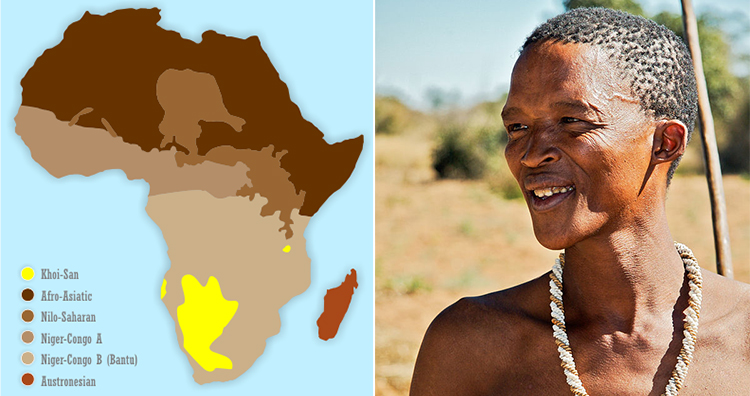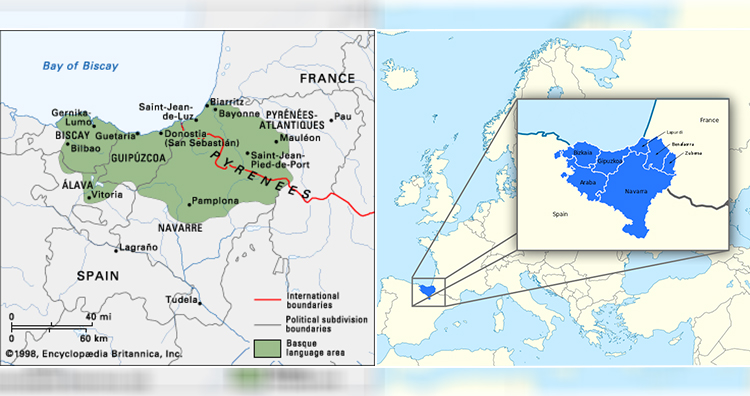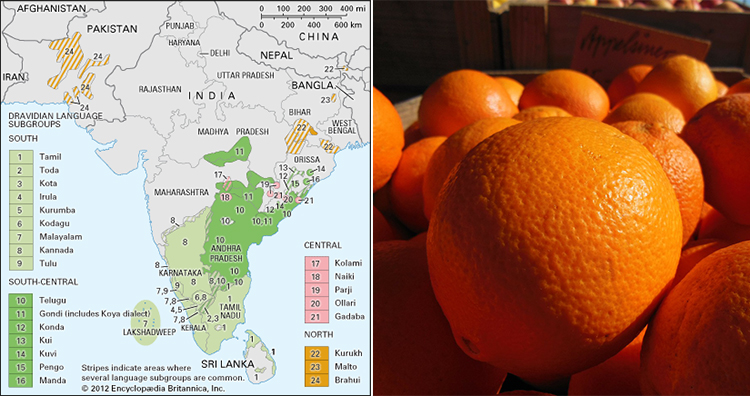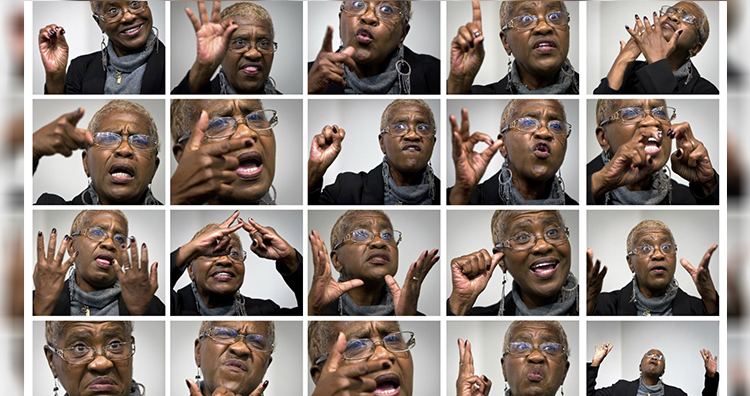1. Pirahã is a Brazilian language that can be whistled, hummed, or encoded in music.
The Amazonian rainforests house a tribe of indigenous people known as the Pirahã. Their language, Pirahã, is one of the last surviving dialects of the Mura language, the language of the state of Amazonas, Brazil. Even though the language is one of the simplest languages phonologically, there are certain things about the language that would just blow your mind.
The Pirahã language contains one of the smallest phoneme inventories which means that there are very few sound variations in the language. The language also does not contain any words to refer to colors. It just has two words for light and dark.
Another unique feature of the language is that it can be hummed and whistled and can be understood without the use of any physical words. Moreover, according to Daniel Everett a researcher working on the language, vowels and consonants can be removed entirely from the language, and yet the meaning can be communicated to other people through variations in pitch, rhythm, and stress. The tone you use determines the meaning that you wish to convey! The Pirahã mothers have been known to teach the language to the kids by singing the same tunes over and over again.(source)
2. There is a language in Africa that only uses five distinct clicking sounds to make up the entire language.

Africa has a number of languages that just consist of click sounds! Known as Khoisan languages, clicks function as normal consonants in these languages. Clicks are distinctive sounds that are made in the mouth via a suction mechanism. This leads to a sharp popping or smacking sound when the tongue touches the roof of the mouth.
Most of these languages consist of just four clicking sounds that can be used to represent the majority of the consonants. Some southern languages use a fifth click, the kiss sound.
Clicks are the initial sounds in about 70% of the words that are part of the Khoisan vocabulary. They offer a bit of dramatic effect during conversations. The uniqueness of these languages has given rise to speculations that maybe the sounds have some kind of special meanings attached to them. But experts believe that that is not the case.(source)
3. The English language consists of words, known as contronyms, that are their own opposites. For example, the word “cleave” has two meanings, i.e. “to cut apart” and “to bind together” which are opposites of each other.

“Contronym” is a word that has multiple meanings in which two of the meanings are completely opposite of each other. Such words are also known as “autantonyms” or “contranyms.” The English language has numerous examples of contronyms. The contronyms might have originated when two different words with different etymologies converged to form a single word or when a single word acquired different and opposite meanings over a span of time. Some contronyms that are commonly used in the English language include “dust“ (verb) which stands for both “to remove dust” and “to sprinkle with soil or dust;” “enjoin” (verb) which stands for both “to prescribe” and “to forbid;” and “ravel” (verb) which stands for both “to tangle” and “to disentangle” threads or fibers.
Apart from English, contronyms can be found in other languages as well. In Latin, “sacer” stands for both “sacred” as well as “accursed.” Also, the Romanian verb a “închiria” means “to rent” as well as “to let.”(source)
4. Papua New Guinea has over 850 living languages.

Papua New Guinea has over 850 languages that are spoken by the tribes residing there. Mind it, these are not dialects. These are whole languages making Papua New Guinea the most linguistically diverse place on earth. They even have a sign language, Papua New Guinean Sign Language, as one of the four official languages with the other three being Tok Pisin, English, and Hiri Motu. Even though English is an official language, it is spoken by only 1–2% of the population.(source)
5. The word “cliché” was originally an onomatopoeia. It came from the sound that old printing presses made while making copies.

“Onomatopoeia” refers to words that describe or mimic the sound that it describes. For example, the sound of a clock can be expressed as “tick-tock” in English. The origin of the word “cliché” was also onomatopoeic.
“Cliché” originated from the French language. The word was used in reference to printing where it referred to a block that reproduced words or images that would be used repeatedly later during printing. It originated from the clicking sound that the printing machine made while making copies.(source)
6. Basque is a language isolate. This means that the language is not related to any other known living language even though it is spoken in the region between France and Spain.

Basque is a language native to the people who reside in the Basque country, a region that lies between the borders of France and Spain on the Atlantic coast. What’s unique about the language is that linguistically, Basque is not related to any language of Europe nor to any other known living language that exists in the world.
Basque is the last remaining language among numerous languages that were spoken in southwestern Europe before the region was Romanized in the 2nd century BCE. According to some statistics, Basque speakers can be found in other parts of Europe as well as the Americas. These speakers are majorly bilingual and are said to be approaching a million in the 21st century.(source)
7. Hebrew died as a spoken, native language around 200 CE. It was later revived on 13 October 1881 in Paris when a man named Eliezer Ben-Yehuda and his friends agreed to exclusively speak Hebrew in their conversations.

The Biblical language Hebrew was spoken some 3,000-3,500 years ago. Once upon a time, it was a language spoken by many. But after the Bar Kohba War of 135 CE, Hebrew slowly started declining as a native, spoken language, even though it was still used for writing for many centuries thereafter.
It was on October 13th, 1881 that the language was once again revived by a group of friends. Eliezer Ben-Yehuda and his friends made a pact to only converse in Hebrew. The credit goes to Eliezer for reviving the language after so many years. Eliezer started learning Hebrew when he was just three years old. When Jewish nationalism gained popularity in 19th century Europe, Eliezer became fascinated with Zionism. He also became acquainted with the concept that speaking a common language is a criterion to define a nation worthy of national rights. This gave Eliezer the idea that reviving the Hebrew language would help to unify Jews worldwide.
Eliezer has had a major contribution to the establishment of the Committee of the Hebrew Language which later became the Academy of the Hebrew Language. He also wrote the first Modern Hebrew dictionary.
As of today, Hebrew is spoken by more than 5 million people as their native language and is the national language of the State of Israel.(source)
8. Mbabaram is an extinct Australian language in which the word for dog is “dog.” There is no relation between these words, and this is a pure coincidence.

Mbabaram was the traditional language of the Mbabaram tribe and is an extinct Australian Aboriginal language. The language is quite famous in linguistic circles because of a striking similarity that it has with an English word.
R. M. W. Dixon, author for Searching for Aboriginal Languages: Memoirs of a Field Worker and a researcher of the language, began studying the language by extracting a few nouns. One of the nouns was the word for “dog.” He discovered that the Mbabaram word for dog was in fact “dog,” and it was pronounced almost identical to the English word. But this is a pure coincidence. There is no relationship between the two languages.(source)
9. Before the English-speaking community was introduced to the fruit, the color orange was referred to as “geoluhread” which stood for red-yellow in Old English.

There was no orange color in English before the English-speaking people came to know of the existence of the fruit orange. The word is known to be a derivative of a Dravidian language, possibly Tamil, and it was passed through numerous other languages such as Sanskrit and Old French. Finally, it reached the English language. The earliest recorded use of the word “orange” in English was in the 13th century when it referred to the fruit. It was only in the 16th century that the word was used to refer to the color.
Before the fruit was introduced to English speakers, the color orange was known as “geoluhread.” It meant red-yellow in Old English.(source)
10. People who communicate via American Sign Language can have accents just as they would in a spoken language.

A research at the University of Pennsylvania discovered that people who converse via American Sign Language (ASL) have an accent of their own similar to people who speak the language. There was a comparison made between the ASL used by people in Philadelphia and the standard ASL. It was found that many of the words were exceptionally different when compared with standard ASL guidelines. The Philadelphia sign language was found to resemble French more than standard ASL.
People who use sign language have accents that vary depending on their age, ethnicity, and whether they are able to somewhat hear or are completely deaf. It has also been observed that the speed in which they deliver the conversation also differs. People using sign language in New York are fast talkers whereas those in Ohio were slow and relaxed. Moreover, people belonging to the southern states of United States tend to touch their lower face and chest when they communicate with sign language, and that has become a distinct regional accent.(source)
11. The English language has an order in which adjectives go and it sounds wrong if the adjectives are not in that order. For example: “loose red top” vs. “red loose top.”

Let’s say it is a warm sunny day and you were roaming outside with your friends wearing a red loose top. Does the sentence sound wrong to you? Should it be “loose red top” instead of “red loose top?” It should be, shouldn’t it?
There is a code that governs the order in which English speakers use adjectives in their sentences. Nobody is taught the order. It is mostly based on the intuition that makes the sentence sound wrong if the adjectives are used in the wrong order.
Such problems generally arise when the border between adjectives for size and color disappears. Linguists have determined a code for such instances that goes as follows: general opinion, then specific opinion, then size, then shape, then age, then color, then provenance, then material (GSSSACPM). Studies have shown and confirmed that GSSSACPM is consistent in most of the instances of written English. In 2003, Stephanie Wulff used a computer program to go through thousands of texts and found out that 78% of the strings of adjectives followed the GSSSACPM code.
So, now, you decide whether this is a cool informative fact or an informative cool fact?(source)
12. The word “plumbing” originates from the Latin word for lead, “plumbum,” which is what most pipes were made of at the time.

The concept of plumbing has been prevalent since the ancient Roman, Greek, Indian, Persian, and Chinese civilizations. These civilizations had public baths and they needed to offer flowing water and wastewater removal systems in the baths. They used pipes that were made of lead.
The scientific name for the element lead is plumbum and its symbol is Pb. This is where the word “plumbing” came from. The word “plumber” also originated during this time.(source)










No comments:
Post a Comment